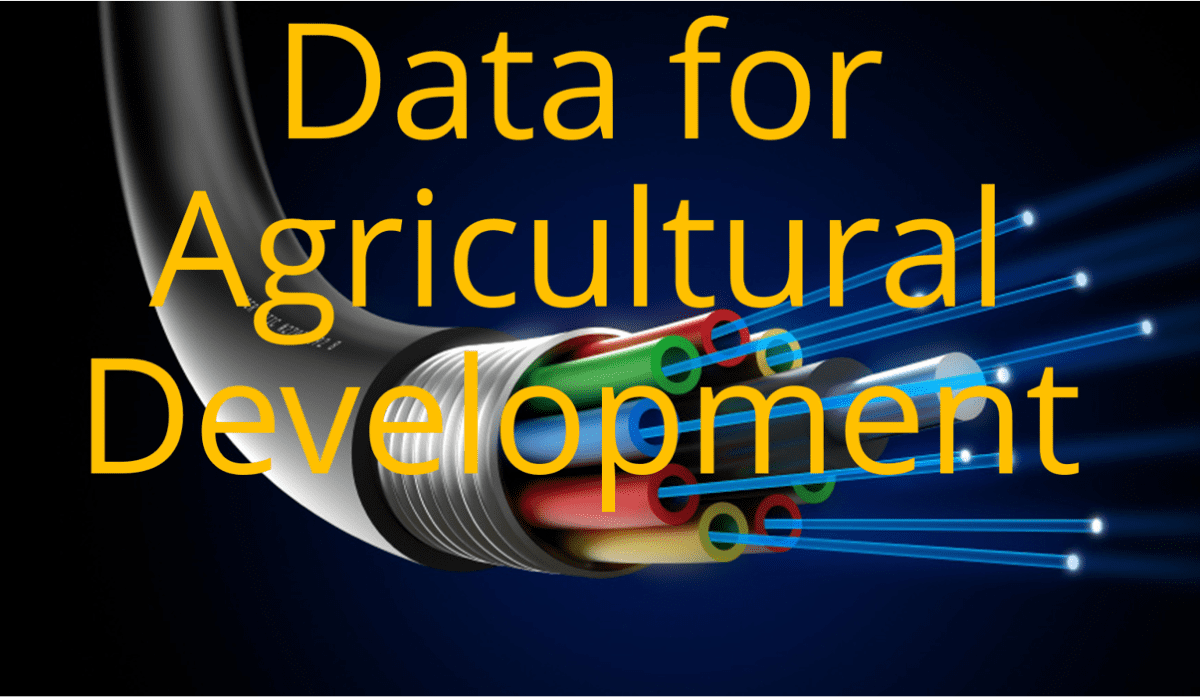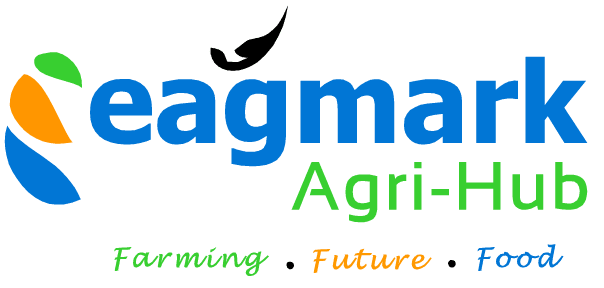Leveraging Data for Agricultural Development and Sustainability

Data has become increasingly important in the field of agriculture, as it can help farmers make more informed decisions about how to manage their crops and livestock. By collecting and analyzing data on factors such as weather, soil conditions, and pest populations, farmers can make more precise predictions about how their crops will grow, and take steps to optimize their yield.
One of the key ways that data is used in agriculture is through the use of precision farming techniques. These techniques involve the use of sensors and other technologies to collect data on a variety of factors that can affect crop growth, such as soil moisture levels, temperature, and sunlight exposure. This data is then used to create detailed maps of individual fields, which can help farmers identify areas that may need extra attention or resources.
For example, a farmer might use data to determine that a certain part of their field is particularly dry, and use that information to adjust their irrigation schedule accordingly. By doing so, they can help ensure that their crops receive the right amount of water at the right times, which can improve their overall health and yield.
In addition to helping farmers manage their crops more effectively, data can also be used to monitor livestock health and optimize feeding and breeding practices. For example, farmers might use data on an animal’s weight and feeding habits to determine the most efficient feeding schedule or use data on an animal’s genetic makeup to make more informed breeding decisions.
The need for farm-level analysis is reinforced by recent policy shifts in the agricultural sector. Many nations have shifted away from market intervention and general payments to farmers in favor of more effective measures that directly target specific objectives like low-income support, eco-services, and adopting technologies and practices that increase productivity, sustainability, and resilience.
Overall, the use of data in agriculture has the potential to greatly improve the efficiency and productivity of farming operations. By providing farmers with more precise information about their crops and animals, data can help them make better decisions and ultimately produce more food for an increasingly growing population.
Data opportunities in agriculture
In rural areas of the developing world, smallholder farmers are the largest employment sector and the most significant contributors to global food production. Family farms account for more than 90% of all farms worldwide; They manage 75% of the farmland and produce 80% of the food.
However, the development of worldwide food creation versus utilization and advancement of world demography shows that there are serious areas of strength for expanding yield. FAO highlights the following facts about the global situation regarding food security and nutrition:
- Since 2015, there has been no reduction in the prevalence of hunger and malnutrition worldwide, which continues to affect nearly 11% of the population. This indicates that the total number of people experiencing hunger is rising.
- Over 2 billion individuals “do not have regular access to safe, nutritious, and sufficient food” in 2019.
Climate change is also having a significant impact on yields at the same time. Reports from various international research organizations show that rainfed maize yields in some parts of Africa could fall by as much as 25% by 2050 compared to levels in 2000. Working toward increasing yields is one of the most promising opportunities to address this multifaceted challenge.
Increasing farmers’ access to a wider range of services, such as trade services, financial services, and extension services, could close these gaps. Since it is anticipated that 85% of farmers’ households will have a mobile phone by 2025, these services can now be provided on a large scale through ICT. The combination of three services – access to finance, advisory services, and market linkages – can result in a 57% increase in farmers’ income and a 168% increase in yield as an illustration of this opportunity.
The most promising method for providing services on a large scale is through the use of ICT technologies; however, the content of these services and their capacity to provide accurate, actionable information or results depend on their capacity to aggregate various data sources.
The mash-up of global data such as satellite images, research studies, databases containing information about crops, seeds, pests, and diseases, etc. is where the majority of stakeholders find the design of the service at the farmer’s level (documentation of field ownership, credit records, etc.) and information based in the field (such as information about the soil, location, state of the fields, crops, etc.) to figure out the content (such as the right information to use when making a decision). Both the availability of new products to support farmers’ production (credit, insurance, etc.) are outcomes at the farmer level and the accessibility of current data to aid in decision-making.
Identifying important datasets related to farming crop cycles
Numerous datasets could be utilized to provide farmers with information and services. Some datasets may be useful at various points in the crop cycle, depending on the requirements. Market prices are an illustration of this. If market prices have a time series that shows how prices have changed recently over the past few years, they can be used to choose the crop to grow. Market prices are also useful during the selling stage, but for this dataset to be useful, the information must be nearly real-time. Obviously, some datasets are only available at the country level; however, other datasets, such as weather data or satellite images, may be available locally, regionally, or globally.
Data analytics, artificial intelligence (AI), and machine learning (ML)
The generation of a substantial amount of data is made possible by the mashup of global datasets and farm-level data. The majority of services that have been made available to date have been fairly basic, involving the use of ICT to provide the service and human analysis of the data pertaining to a specific use case.
Future opportunities are provided by new methods, particularly Big Data, blockchain, data science, artificial intelligence, and machine learning. This includes predictive analysis like yield forecasts that will inform all actors in the value chain, from public authorities to traders, providing early warning of potential food security risks.
Increased data availability will make these future strategies feasible. The volume of data will grow exponentially, providing more opportunities for more advanced predictive automatic services, as farm-level data become more readily available, automatic data collection through, for example, sensors begin to spread at scale, and governments, international organizations, all actors, including the private sector, release more open datasets and increase access to big data streams. These services have a greater impact and are more long-lasting because they offer more added value at lower prices than the previous generation of ICT services. With the availability and growth of data science capabilities in almost every nation on the planet, the trend is evident and is likely to result in a new wave of services in the coming years.
The Potential of Big Data and IoT in Agriculture for Africa
The potential of big data and the internet of things (IoT) in agriculture is immense, particularly for the African continent. By harnessing the power of these technologies, African farmers can improve the efficiency and productivity of their operations, while also gaining access to valuable data and insights that can help them make better-informed decisions.
Big data refers to the vast amounts of data generated by various sources, including sensors, devices, and machines. This data can provide valuable information about various aspects of agriculture, including crop yields, soil health, weather conditions, and pest infestations. By analyzing this data, farmers can gain a better understanding of their operations and make more informed decisions about how to optimize their crops and maximize their yields.
The IoT, on the other hand, refers to the network of interconnected devices and sensors that can collect and transmit data in real-time. This technology can be used in agriculture to monitor and control various aspects of the farming process, such as irrigation systems, soil moisture levels, and crop health. By using the IoT, farmers can automate many of the tasks involved in agriculture and reduce the need for manual labor, which can be time-consuming and labor-intensive.
One of the key benefits of big data and the IoT in agriculture is their ability to help farmers make more accurate predictions about the future. By analyzing historical data and trends, farmers can make more informed decisions about when to plant and harvest their crops, as well as how to allocate their resources to maximize their yields. This can help farmers avoid potential losses due to unforeseen events, such as drought or pests, and ensure that their operations remain profitable.
Additionally, big data and the IoT can help farmers gain access to valuable market insights and information about the demand for their products. By using data analytics tools, farmers can track trends in the agricultural market and adjust their operations accordingly to ensure that they are producing crops that are in high demand. This can help farmers increase their revenues and improve the sustainability of their operations.
In conclusion, the potential of big data and the IoT in agriculture is vast, particularly for the African continent. By leveraging these technologies, African farmers can improve the efficiency and productivity of their operations, while also gaining access to valuable data and insights that can help them make better-informed decisions. This can ultimately help to drive economic growth and development in Africa, while also improving the livelihoods of farmers across the continent.
The future of big data and IoT in agriculture for Africa
The future of big data and IoT in agriculture for Africa is an exciting prospect that has the potential to revolutionize the industry and help alleviate food insecurity on the continent.
One of the key challenges facing agriculture in Africa is the lack of access to accurate and timely data. This can make it difficult for farmers to make informed decisions about their crops and livestock, leading to lower productivity and profitability.
However, the advent of big data and IoT technologies has the potential to change this. By using sensors, drones, and other IoT devices, farmers can collect and analyze real-time data on factors such as soil moisture, temperature, and plant health. This data can then be used to optimize irrigation, fertilization, and pest control, leading to more efficient and sustainable farming practices.
In addition, big data and IoT technologies can help improve supply chain management and reduce food waste. By tracking the movement of crops and livestock from the farm to the market, farmers and supply chain managers can better forecast demand and adjust production accordingly. This can help reduce food spoilage and waste, which is a major issue in many parts of Africa.
Furthermore, big data and IoT technologies can also help connect farmers with other stakeholders in the agricultural ecosystem, such as buyers, processors, and distributors. This can help create new market opportunities for farmers and improve access to finance and other resources.
Overall, the future of big data and IoT in agriculture for Africa is full of potential. By leveraging these technologies, farmers can improve their productivity and profitability, and help address the challenges of food insecurity and environmental sustainability on the continent.



